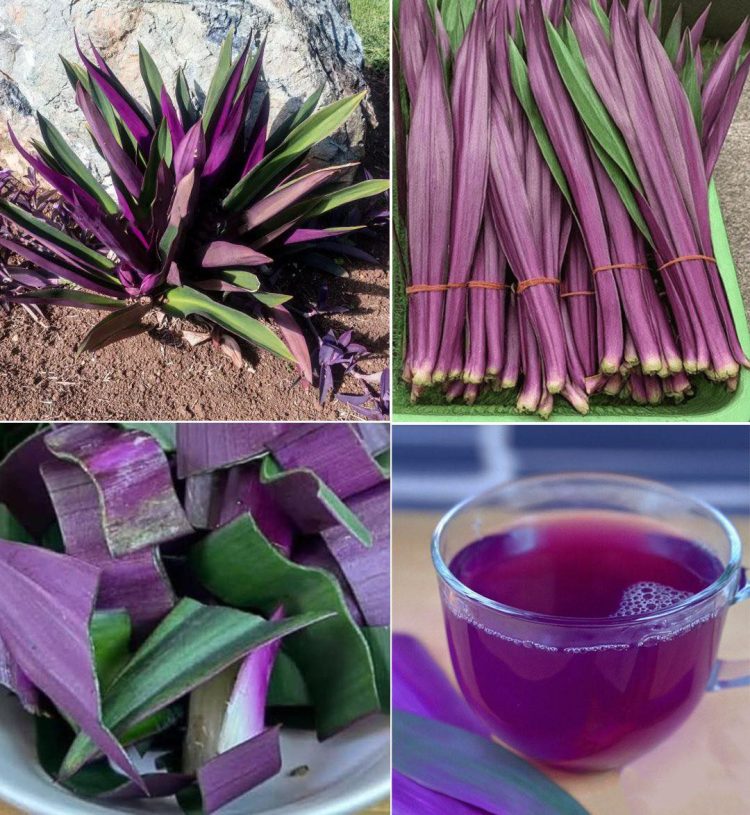The purple maguey (Agave atrovirens or regional variants of Agave americana) is a striking succulent plant native to Mexico and Central America. Known for its deep violet or purple-tinged leaves and thick rosette structure, this plant has been treasured for centuries—not just for its beauty or use in making pulque and mezcal, but for its powerful medicinal properties.
From traditional Aztec remedies to modern herbal medicine, purple maguey has found its place as a natural healer. Here’s a comprehensive look at the health benefits, traditional uses, and the science behind this remarkable plant.
🌿 1. Powerful Anti-Inflammatory Properties
What it helps: Joint pain, swelling, arthritis, injuries
Traditional healers have long applied crushed maguey leaves or sap directly to inflamed joints and swollen tissues. This natural remedy is thought to reduce inflammatory cytokines, thanks to the presence of saponins and flavonoids in the leaf.
How it’s used: Fresh leaf poultices or topical applications of the juice
Modern insight: Studies confirm that agave sap contains anti-inflammatory compounds that may reduce local inflammation when applied externally.
🩹 2. Wound Healing and Skin Regeneration
What it helps: Burns, cuts, ulcers, skin infections
The gel inside purple maguey leaves acts similarly to aloe vera. It promotes faster healing by keeping wounds moist, delivering antimicrobial compounds, and stimulating tissue regeneration.
Traditional use: Leaves split open and applied to wounds, especially in rural areas with no access to modern medicine.
Scientific note: Agave’s sap contains fructans and steroidal compounds that support cellular repair and fight bacterial growth.
🌱 3. Detoxification and Liver Support
What it helps: Liver stagnation, poor digestion, toxin buildup
In traditional Mexican medicine, a tea made from maguey leaf or root was used to “purify the blood” or cleanse the liver. While the exact mechanism wasn’t known at the time, modern research now supports the idea that certain agave species may stimulate bile flow and detoxification enzymes in the liver.
How to consume: Lightly boiled decoction of dried or fresh maguey leaves
Precaution: It must be used in moderation; large quantities can be too harsh on the digestive tract.
🧪 4. Antimicrobial and Antifungal Effects
What it helps: Skin infections, athlete’s foot, minor fungal conditions
The purple maguey has been used topically to treat infections caused by bacteria and fungi. The juice and leaf extract have shown natural antiseptic and antifungal activity, useful for disinfecting wounds and preventing secondary infections.
Key compounds: Saponins, inulin, and polyphenols
Traditional method: Sap applied directly to infected area or used to rinse wounds
❤️ 5. Blood Sugar Regulation
What it helps: Type 2 diabetes, insulin resistance
Though not a substitute for medical treatment, some traditional uses of purple maguey include managing blood sugar levels. Its natural inulin content—a prebiotic fiber—may slow glucose absorption and improve gut microbiota, indirectly supporting glucose metabolism.
Scientific view: Inulin helps delay carbohydrate absorption and improves insulin sensitivity in some studies.
Caution: Only used under supervision or as a dietary aid—not a stand-alone cure.
🍽️ 6. Digestive Aid and Prebiotic Source
What it helps: Constipation, poor gut flora, bloating
The natural fiber and inulin found in purple maguey stimulate bowel movement and feed healthy gut bacteria. Traditionally, it was consumed as a mild laxative or digestive tonic, especially after heavy meals.
see continuation on next page
